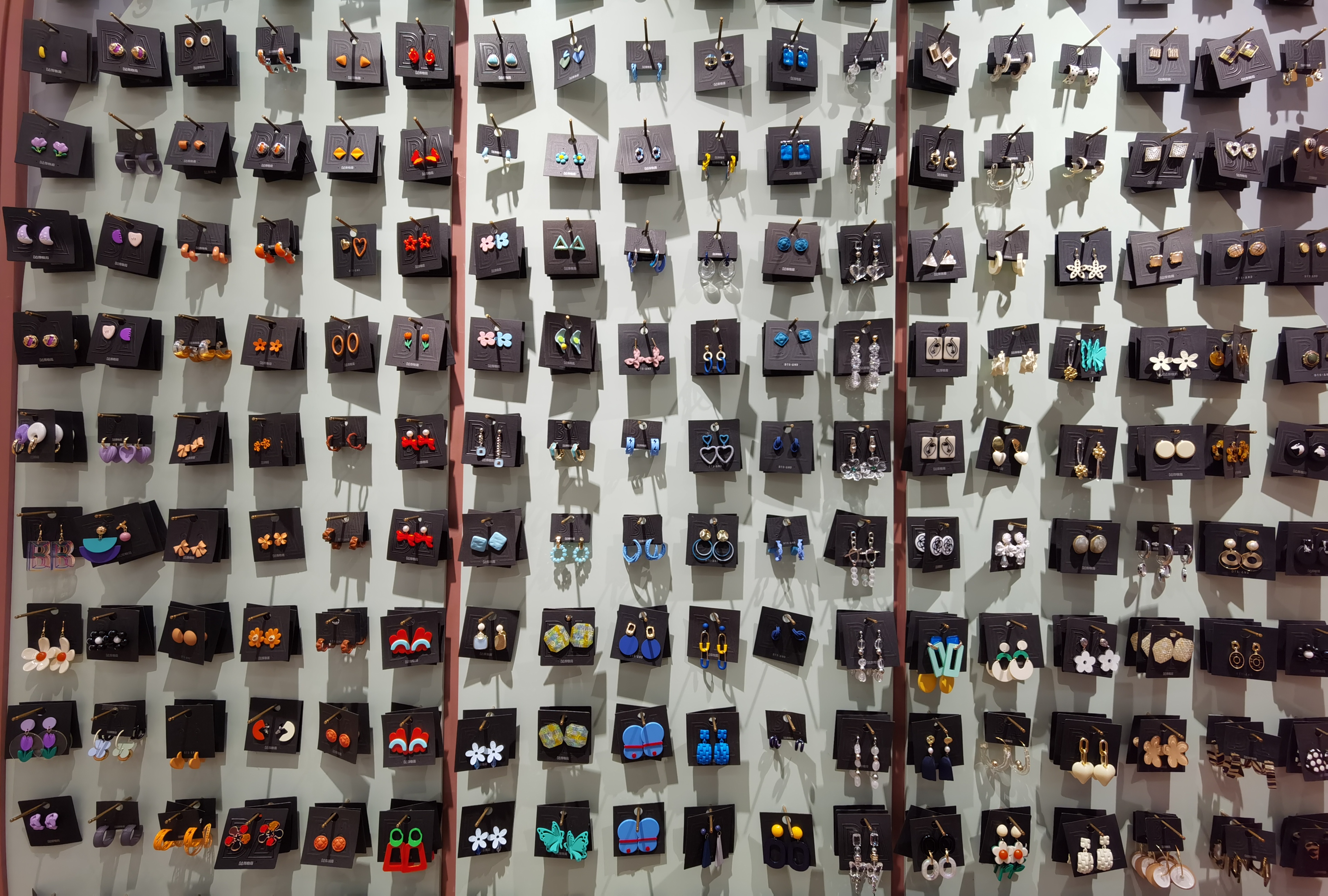It's 11 p.m. But more than 30,000 people are still watching a livestreamer showcasing earrings, necklaces and rings. This is a daily scene for a fashion accessories store on China's online shopping magnate Taobao.
On Bilibili, a popular video-sharing platform, thousands of uploaders produce videos recommending trendy fashion accessories or their stores with views between one million to a few hundred. On social media platforms, topics about fashion accessories are timeless.
"I often buy fashion accessories online because the price is low, but I returned some because they didn't look as good as I had expected," said Lu Meiting, who just bought some earrings from a store in a shopping mall in Beijing. "I buy fashion accessories in a physical store too because I can try them on immediately."
Like many accessory buyers, Lu often wears them to match or highlight her styles on different occasions. In 2020, Generation Z became the primary consumers in the accessories industry, accounting for 56 percent, and each of them purchased at least three times a year, according to data from iiMedia Research, a market consultancy based in Guangdong Province.
Given booming e-commerce platforms and convenient distribution channels, the fashion accessories industry has caught the eye of many investors in China. As a result, many new brands, such as ACC Super Accessories, BA Accessories and Onions, compete in the enormous market.
ACC Super Accessories has opened 100 offline stores across China by August 12, 2021. Founded in October 2020, the brand had received $100 million worth of investment from eight shareholders, including Orchid Asia Investment, Xiaomi Technology and Shunwei Capital, according to the database query platform Tianyancha.com by May 2021. In addition, other brands are following its steps closely.
Targeting Generation Z, these brands offer trendy designs and affordable prices, ranging from 19 yuan ($2.9) to 500 yuan. In the stores of the emerging brands, walls of earrings, necklaces, bracelets and hair ties are neatly arranged. Customers can try all accessories, and most of them can't help making purchases on a whim.
Some newly opened stores always attract local fashion enthusiasts who will share their shopping experiences on social media platforms, which will, in turn, draw curious customers to the stores.

Earrings are set orderly in an accessories store in Beijing, August 10, 2021. Du Junzhi/CGTN
Earrings are set orderly in an accessories store in Beijing, August 10, 2021. Du Junzhi/CGTN
"Earrings sell best, and the busiest hours are from 4 p.m to 8 p.m," said Zeng Cai, a sales staff member in an accessories store. She introduced that the store opened in February 2021 and had accumulated over 10,000 VIP members. Most customers signed up for the 99-yuan membership because they would have a 50-percent discount for all items for a year.
The business of offline stores dropped in August because of the recent resurgence of COVID-19 cases, especially for those near tourist attractions. Therefore, some brands are building up online selling channels, too.
As for the quality of these budget-friendly accessories, most consumers are frequently concerned about whether their skin will be allergic to the materials, whether the color will stay, or whether some fragile parts will break soon. But there's a bigger concern.
To meet these requirements at a low cost, manufacturers have found the secret: materials. Most of the materials used in producing accessories are plastics and metals. Unfortunately, about 60 percent of plastic products end up in a landfill, oceans or remains the natural environment, according to data from the United Nations Environment Programme. Plastic pollution is so ubiquitous that it can afflict land, waterways and oceans. It takes many years for plastic products to decompose, and when they break down into smaller pieces, they can appear in the tap water we drink and the air we breathe.
Alloys are widely used in cheap jewelry. In order to get the glittering look that consumers want, alloys need to go through the electroplating process. Unfortunately, electroplated alloys have a more severe environmental impact, according to a comparative analysis from the International Journal of Advances in Engineering & Technology in August 2019. The study has shown that the electroplating process incorporates at least six procedures, adding other metals in each procedure and consuming natural resources such as water and energy.
What's more, experts said that the electroplating wastewater was one of the important sources of heavy metal pollution. If the wastewater is unprocessed before entering the water system, heavy metals in it might be absorbed by plants, animals and humans. Heavy metals damage our health. For example, cadmium can make our bones brittle, and lead can give us headaches, dizziness, and in severe cases, cancer and even death.
This might be the real price of disposable fast fashion accessories.
Ruled by trends that come and go quickly, fashion, in a way, encourages consumption and even the "throw-away" culture. Apparently, the way to deal with unwanted pieces is lagging behind the production and selling of new pieces. We can be stylish at a truly low price if the industry and customers can work together by recycling or using environment-friendly materials and production methods. Customers have much power to change the world by making conscious buying decisions.
"I like buying fashion accessories, which is why I chose to work in this store. In the beginning, all pieces are lovely to me. Then they lost their charm quickly because I saw them every day," said a shopping guide.
Editor: Wang Xiaonan

